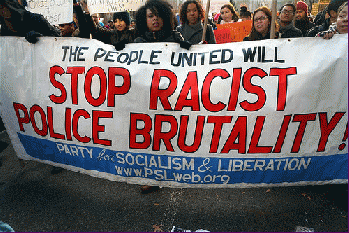Reprinted from neweconomicperspectives.org by William Black
Part 2 of my series on Race, Crime, and Policing
By William K. Black
July 31, 2016 Bloomington, MN
My introductory column in this series laid out the blood libels against police, policing, blacks, and whites that are doing so much harm to America. This second installment provides a brief historical overview necessary to begin the discussion about the blood libels against Black Lives Matter, law enforcement officers (LEOs) and whites as a racial group. I repeat my warning from my introductory installment that criminology produces hard truths and nuanced explanations that upset almost everyone.
In order to understand the discussion of blood libels I need to provide the reader with a very brief overview of the key policing practices most relevant to race. This thumbnail history is necessary to understand a series of paradoxes that I will discuss in this series of articles. These paradoxes often are critical to understanding the intersection of police, policing, crime, gender, age, and race.
U.S. Policing's History of Structural Racism
To speak very broadly, there were three eras of structural racism for policing in America in roughly the first 100 years after the end of Reconstruction. (True public police forces began to be established in major U.S. cities in the late 1830s. They were rare in the South before the Civil War.) A fourth era of structural racism developed more recently. The policing policies I discuss were typically the policies desired and crafted by local and state government leaders. The LEOs were not acting as rogues.
A series of cautions and two paradoxes are important to keep in mind when reading this historical discussion. First, this is an ultra-brief overview focused on one aspect of policing. Policing involves myriad aspects. Second, policing is overwhelmingly local and overlapping. There are roughly 18,000 U.S. police departments and very little uniformity. There are now, roughly, one million LEOs. (It is actually very difficult to know how many LEOs there are, which should serve as a warning about data limitations.) LEOs are individuals and they vary enormously. Third, I'm writing about 140 years of policing. Fourth, the eras I describe overlap and how they overlap varies greatly by locality and region.
There are two central paradoxes with regard to U.S. policing's role as a device of structural racism. There is enormous continuity of policing serving as a device of structural racism for virtually its entire existence, but how it has done so has changed enormously and those changes are essential to understanding the blood libels that abound about policing.
The second, related, paradox is that while the policing and the criminal justice systems have continued to function as devices of structural racism, racism among LEOs and their professional leaders has fallen dramatically and the most virulent forms of racism are exceptionally rare among today's LEOs. These changes reflect, but go beyond, the dramatic reduction in the most virulent forms of racism among whites. Understanding this paradox is also essential to understanding today's blood libels about police and policing.
Many police leaders decided decades ago to adopt a new model of "community policing" and other reforms that go beyond the criminal justice system. In future columns I will describe how LEOs, community leaders and members, and criminologists have increasingly achieved consensus on the desirability of this approach. These new approaches have shown the ability to reduce crimes of violence, the repression of the community, and cost -- and produced large collateral advantages -- a win-win-win-win.
The Era of Policing as a Tool of Anti-Black Terror to Restore Absolute White Power
First, there was terror, exemplified by lynching. This was most common in the South, but it was not limited to the South. The police were often directly complicit in lynching and the law enforcement system allowed the lynching, disproportionately but not exclusively of blacks, with total impunity. Lynching was not designed as a means of mass killing of blacks, but as a weapon of terror to intimidate and repress blacks. It frequently involved torture and humiliation of the victim.
Lynching and mass killings were the preferred tactics of the first wave of the Klan. The Klan's political objective was to destroy Reconstruction and its democratic and social reforms and return the worst white elites to absolute economic, social, and political domination through a reign of terror. The Klan's political and paramilitary heirs succeeded in destroying Reconstruction. The decisive political blow was a cynical political deal that decided the presidency in 1876. (A sympathetic account of Rutherford B. Hayes' actions makes clear that the power of the systemic racism and violence that the Klan (and its paramilitary successors) and white political elites put in place to destroy Reconstruction and the three post-Civil War amendments designed to protect the rights of the freed slaves.)
(Note: You can view every article as one long page if you sign up as an Advocate Member, or higher).





